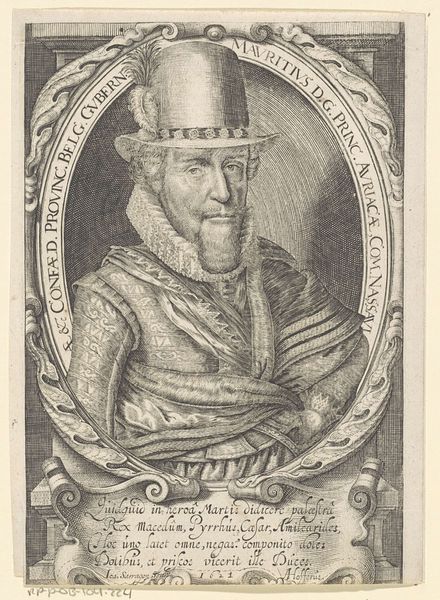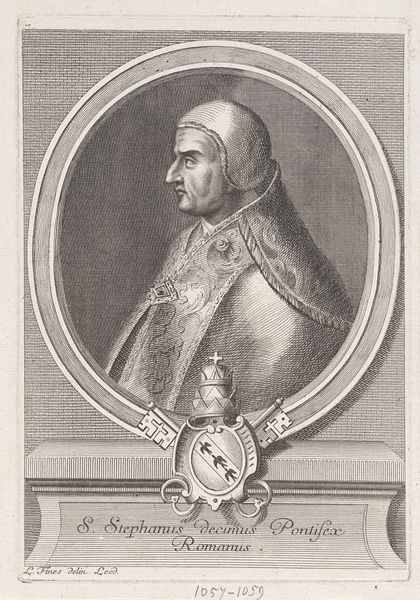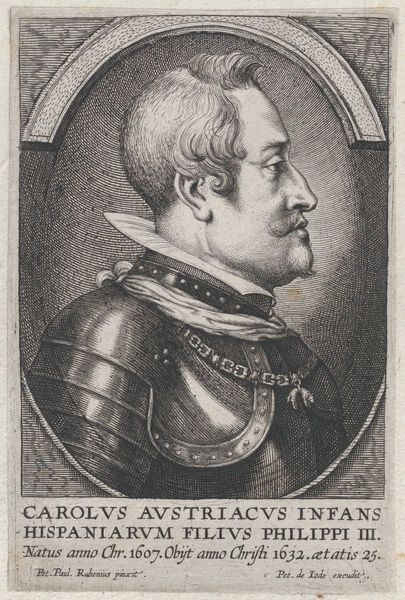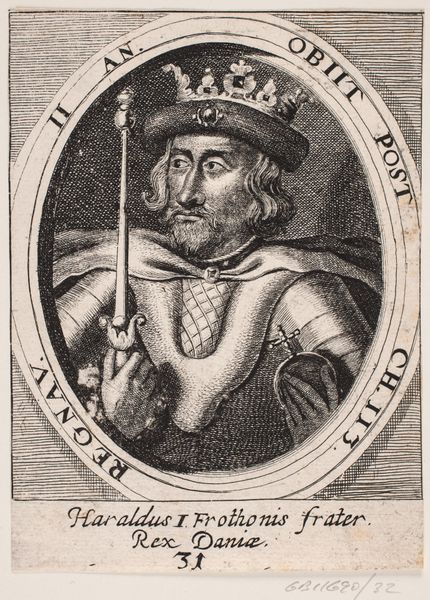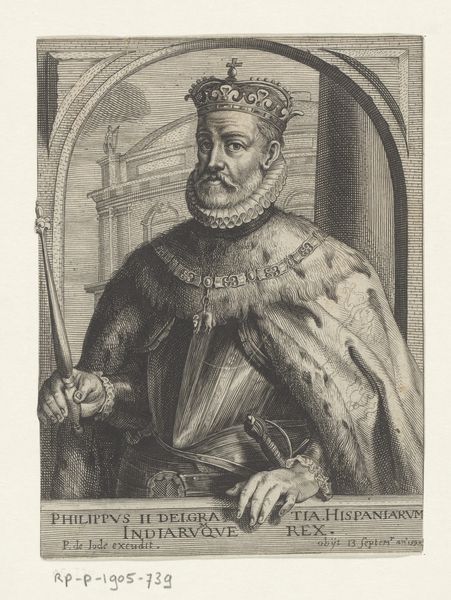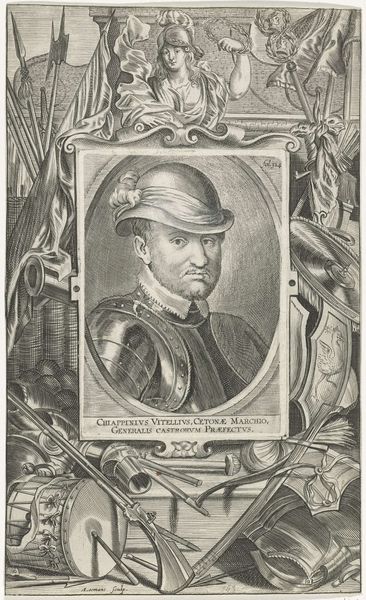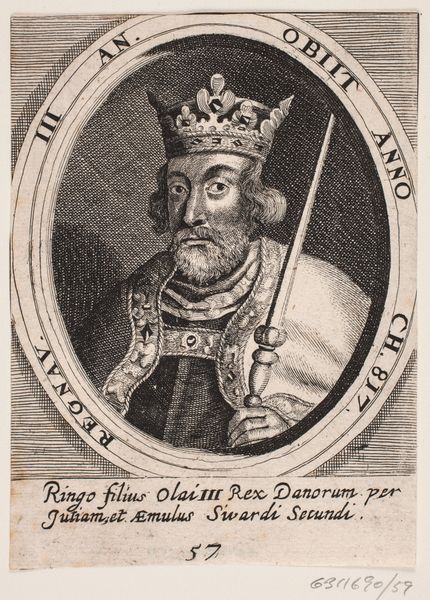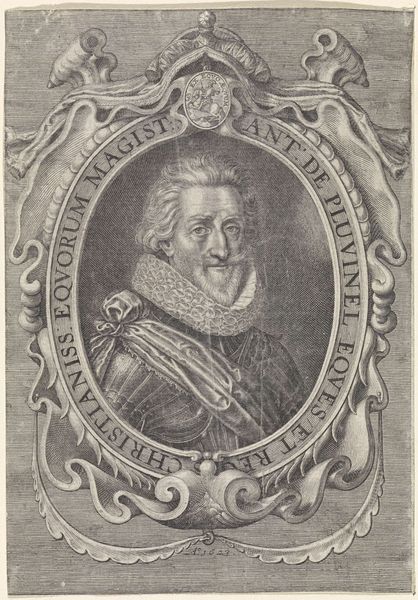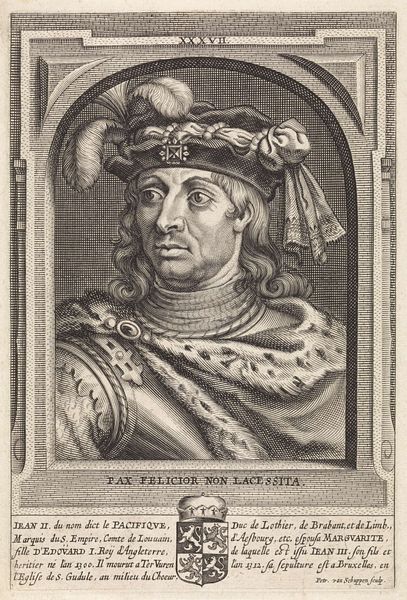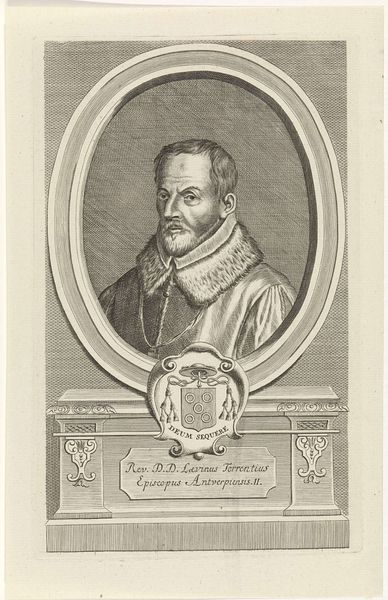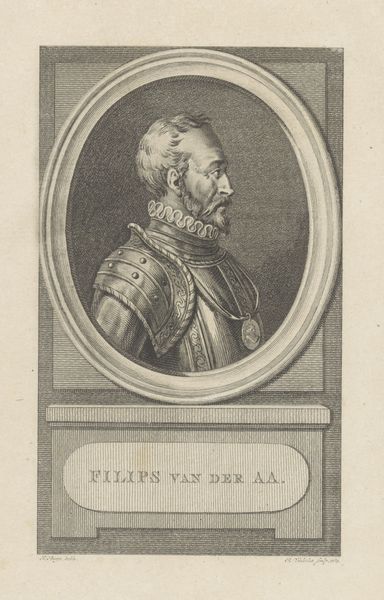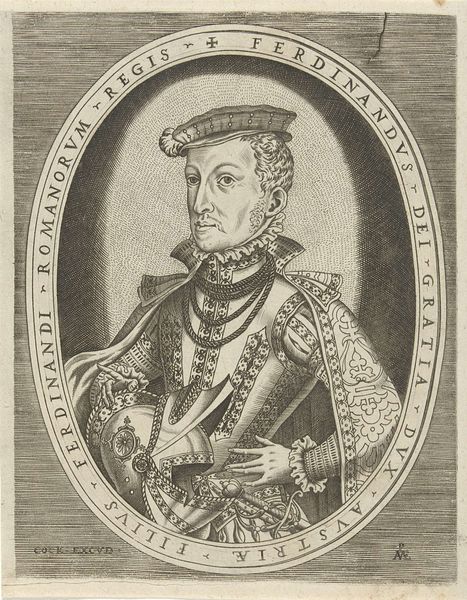
graphic-art, print, paper, engraving
#
portrait
#
graphic-art
#
baroque
# print
#
old engraving style
#
figuration
#
paper
#
line
#
history-painting
#
engraving
Dimensions: height 174 mm, width 105 mm
Copyright: Rijks Museum: Open Domain
Editor: Here we have a portrait from 1748, by Jan Punt, titled "Portret van Jan zonder Vrees, hertog van Bourgondië"—or "Portrait of John the Fearless, Duke of Burgundy". It’s a print, and I’m struck by how much detail the artist achieved with just line work. What stands out to you about this engraving? Curator: As a materialist, I’m drawn to consider the engraving process itself. Think of the labour involved: the meticulous cutting of lines into the metal plate, the printing process on paper... and the context it provides. This wasn’t just about making an image; it was about producing multiples, distributing an idea of power through a reproducible format accessible beyond painted portraiture. Consider who controlled these modes of production, these printing workshops. What political agenda did their materials serve? Editor: That’s a really interesting way to look at it. I tend to focus on the Duke himself, on how he’s portrayed and what the symbols might mean. But you are right, the *making* of the image speaks volumes about cultural dissemination. Curator: Exactly. Look at the quality of the paper, likely rag paper, then a valued commodity! Consider too the skills involved in engraving; skills passed down through guilds. The level of artistry elevated it from simple reproduction to something valued in its own right. So it’s more than just a portrait; it’s a material record of early modern social and political power. It makes one question notions of originality, high versus low art, doesn't it? Editor: Absolutely. I hadn't really considered how the materials themselves can tell a story about power and class. I'm going to keep an eye on the media used, beyond the face of the subject from now on. Curator: Glad I could offer some perspective, paying attention to these material details really helps me unpack assumptions!
Comments
No comments
Be the first to comment and join the conversation on the ultimate creative platform.
